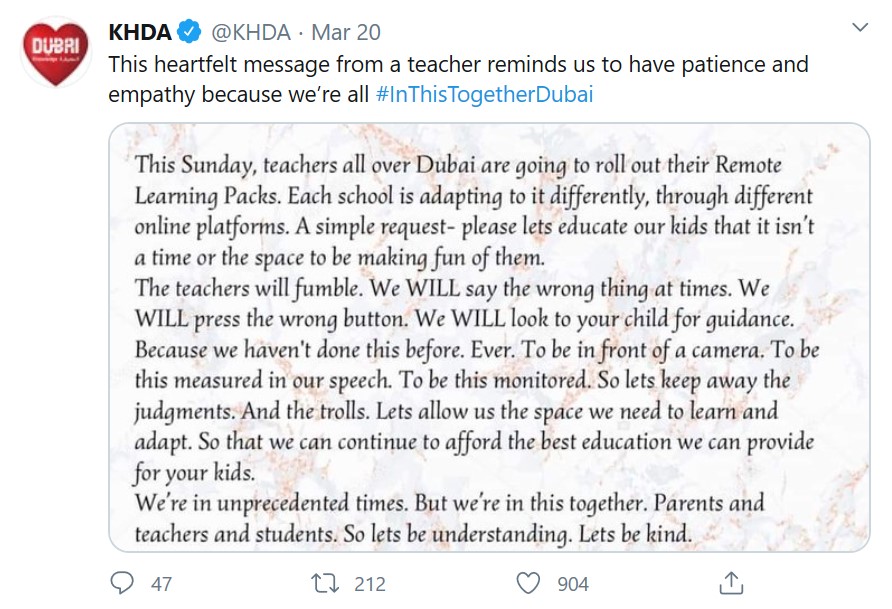How do we create more emotional connection during social distancing?
Teachers in China, HK, Singapore have been using digital tools to stay connected with their students for over a month now. Their colleagues in Italy, France, Germany, UK, US have been challenged to adapt their approach and their curriculum in a matter of days to prepare for ‘distance-learning’. Educators around the UAE begin their e-learning journey this week joining teachers across the world.
Connect #inthistogether
These are worrying times of vital (but challenging) social distancing. But for committed teachers, one of their biggest worries is how to maintain high-quality learning for their students from a distance.
As we are part of a wonderful network of committed educators right around the world, there is a huge amount that we can learn from others’ experiences. For example this article from Edutopia and this by International Educators.
For us (Ulrike and Tim), one of our most important purposes as educators is the emotional connection and literacy that we can build with others in our classrooms, offices and meeting rooms. As the opportunities for interaction in person have been dramatically reduced, it is essential that we look for other ways to build this connection with our students and colleagues.
Connection as more than a subject teacher
Now more than ever it is vital remember that you are not just an English or Math teacher but you continue to educate the wholeness of the human being in front of your screen. Therein lies a huge responsibility, especially now that their social contacts and therefore their social learning experiences are so strongly limited.
We know that technical devices and on-screen interactions take away many of the communication channels that you would normally have in a classroom. Because you can only see or hear a fragment of the students (their face, their voice, their surroundings) it is necessary to put more emphasis on your other senses as well as the way you express yourself to create the connection you want.
Here are 5 things to think about when connecting with your students:
- When approaching the students make it a conscious point to connect to things you know about them personally like: “John, I remember you have that cute dog at home, would you be willing to tell us what you feed to your dog, so we can learn from this about dogs in general?”
- Tell something about yourself, try to show how you cope with the situation and do not let it sound as if you are preaching but rather tell about the joys and some simple challenges you have overcome.
- Use more informal language in order to sound more authentic, for example, using humor or encouraging chat amongst the group.
- Send small personalized reminders to single students that you feel struggle the most, let them literally see, that you think about them and that you are there for them.
- Set tasks that involve letting the children express their feelings and have an exchange about it with other students. It is very important for the children to see that everyone is in this and that whatever they experience is very likely to be the case with others as well. Set your antenna to be very finely tuned to read in-between the lines – this might be in facial expressions or tone/modulation of voice. So if you sense any need in your students to connect on a personal level, you can do this later 1-to-1.
We are here for you, use this connection and share your experiences
As we do not know how long this situation will persist, it is important that you create a need for the students to connect with you, and to maintain this need long term. This only can happen if your students enjoy the experience – as they have many much easier options to hide themselves in or to break the contact. Many of the students will continue the journey just because of you personally. Even if you are not a natural in this, try to consciously let them experience the person behind the teacher.
We wish you all the best in your journey. We are here to support you and we would be happy if you would share your experiences (successes and challenges) in the comments below for others to be inspired and learn.



Hi,
Completely agree with the article.Had the first experience of an online lesson. What I can tell from my experience is, to keep it simple and not get them involved in too many complicated tasks.Try to connect with them emotionally as well and yes ,humour is indeed an important key !
I am sure we shall learn more as we move on this path further.
Best wishes to everyone.
Thank you Geeti for your useful reflections. Congratulations for today and I am sure that you will be adding a huge amount to the young people lucky enough to be learning with you! Keep up the great work!